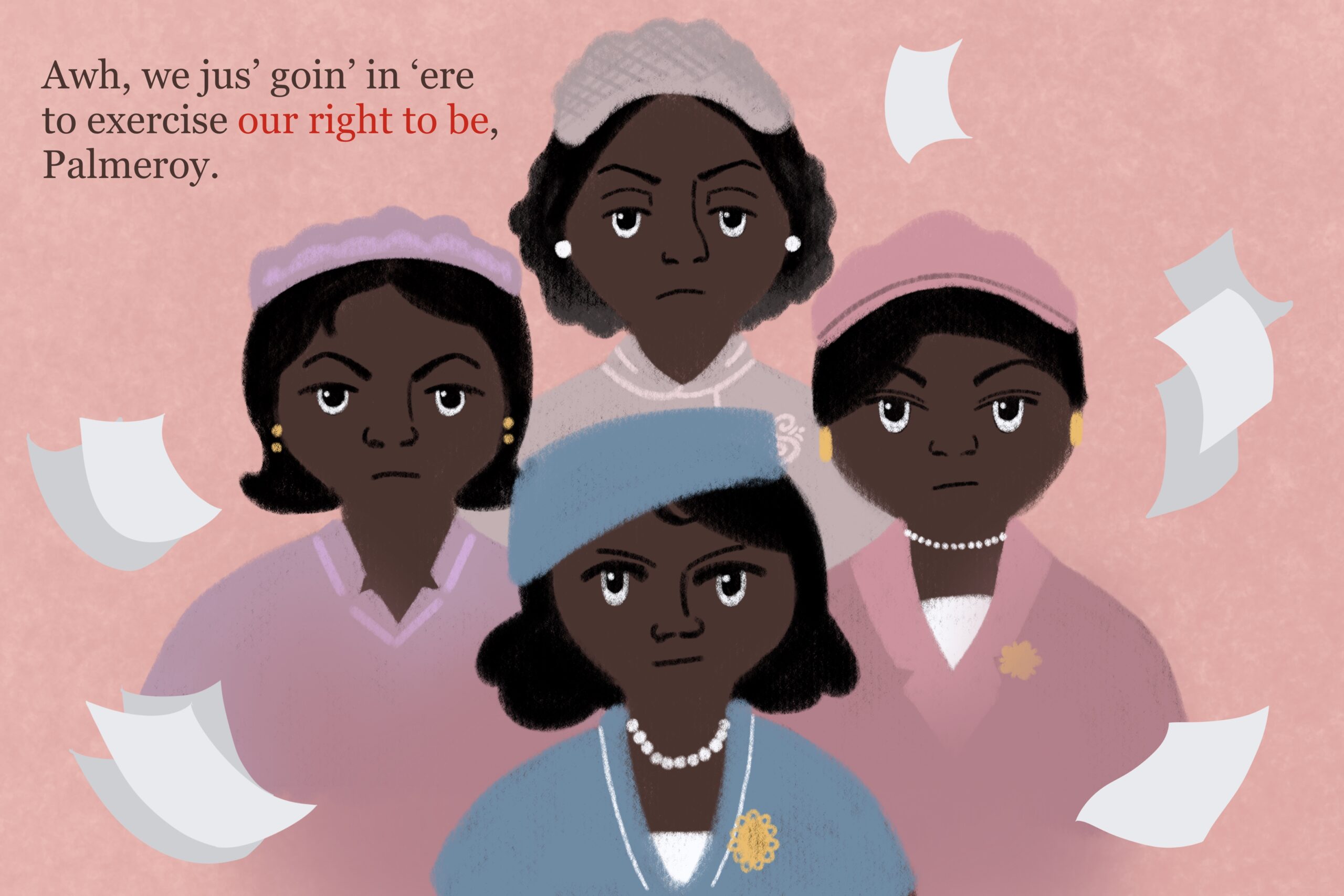S.M. Shepard-Massat’s depiction of the post-segregation South in her play, “Waiting to be Invited,” promotes the power of personal narratives.
Before talking about the plot of “Waiting to be Invited,” it’s important to see the circumstances that led to and influenced the story’s creation—the life experiences of playwright S.M. Shephard-Massat.Born in 1954, she experienced the effects of desegregation on not just her life, but of the people around her, especially adults. During a discussion in a playwriting class at Hunter College in March, Shepard-Massat described that all the characters, especially the four main women, were inspired by the adults who raised her in the 50s Atlanta Georgia before and during desegregation. But what makes this story unique is that it’s written using African-American Vernacular English, a dialect common in everyday conversation , not academic literature.
Reading the play, though challenging at first, showed just how much of an impact diction has on the reader’s understanding of and connection to the characters, especially if that was the language they grew up with. “Waiting to be Invited” shows how writing not just what you know, but writing how you know adds another layer of immersion to the audience’s experience that teaches them about a time and place that isn’t very prevalent in theater, except during February.
The process of desegregation may have begun with the landmark case Brown v. Board of Education of Topeka, Kansas in 1954 but it wasn’t until ten years later that the Civil Rights Act of 1964 outlawed discrimination based on race, color, sex, religion and national origin. Yet, even after its passing, there were still court cases that questioned the federal court’s ability to enforce desegregation.One of these cases that most directly influenced “Waiting to be Invited” is Katzenbach v. McClung (1964). The Supreme Court’s ruling declared that it was within Congress’ power to forbid racial discrimination in restaurants.
It is during the aftermath of this ruling that the story of four black women traveling to a “whites-only” restaurant in “Waiting to be Invited” begins.
During the summer of 1964 in Atlanta, Georgia, three black women; Ms. Louise, Ms. Odessa, and Ms. Delores set out to travel, by bus, from their jobs at a toy company to Marsh’s Department Store where they will meet their friend Ms. Ruth for lunch. During their journey, the three women experience moments that to them are normal, but informs the audience of the wider realities of being Black during that era.
In one scene, the bus driver, Palmeroy Bateman, talks to the women about why he prefers to not eat at restaurants. He explains that segregated restaurants force him to take his food someplace else to eat it but by the time he finds a new spot, his food has gotten cold. This dialogue shows what the restaurant experience was like during segregation for Black people and that Palmeroy has experienced it enough to become sick of it.
Ms. Grayson, a white woman, whose presence stood out because of her status as a white woman living in the South. When she enters the bus , she makes small talk with Palmeroy and takes a seat between Ms. Louise and Ms. Odessa. Right as she enters the scene the trio’s lively conversation about their lunch plans fall silent. For the remainder of the scene,the only conversation occurs between Ms. Grayson and Palmeroy while the trio of Black women keep quiet. When Ms. Grayson does speak to any of them, she’s usually met with a concise answer meant to end the interaction as quickly as possible. These limited interactions between Ms. Grayson and the trio highlight the discomfort a Black person may experience in a society where the wrong word may lead to being criminalized.
S.M. Shepard-Massat’s play “Waiting to be Invited” is a showcase of the tools that a playwright has at their disposal when attempting to write stories that are a representation of the world they experienced. A writer can use languages that, although different from what is standard , are specific to their lives, allowing them to write stories that have a deeper personal connection. Another technique would be to shape one’s character based on real-life figures which allows the writer to create characters that look, act and sound realistic. S.M. Shepard-Massat shows that playwrights can and should write plays that go against the grain because it would lead to a story that is authentic and fresh.

















